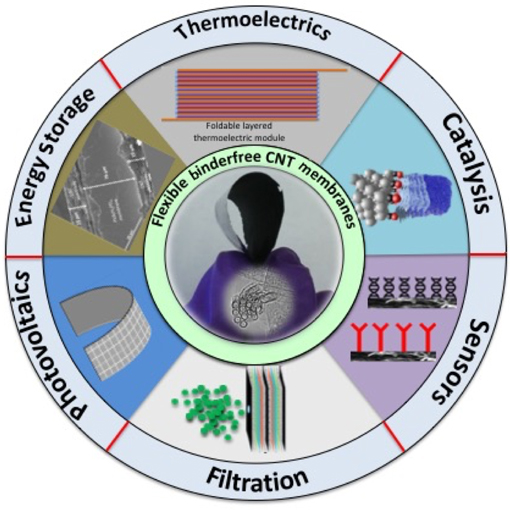Article contents
CNT flexible membranes for energy storage and conversion systems
Published online by Cambridge University Press: 24 April 2019
Abstract

We have successfully employed a charge transfer mechanism to convert carbon nanotube (CNT) powder into CNT flexible membrane with no binder. We have demonstrated the use of the CNT membranes as electrode in a stacked bipolar solid-state capacitor using grafoil as current collector that showed 80% capacitance retention over 10,000 cycles at 70 °C. The CNT membranes could have potential application in catalysis, photovoltaic, thermoelectric, and many others.
- Type
- Research Letters
- Information
- Copyright
- Copyright © Materials Research Society 2019
References
- 3
- Cited by




